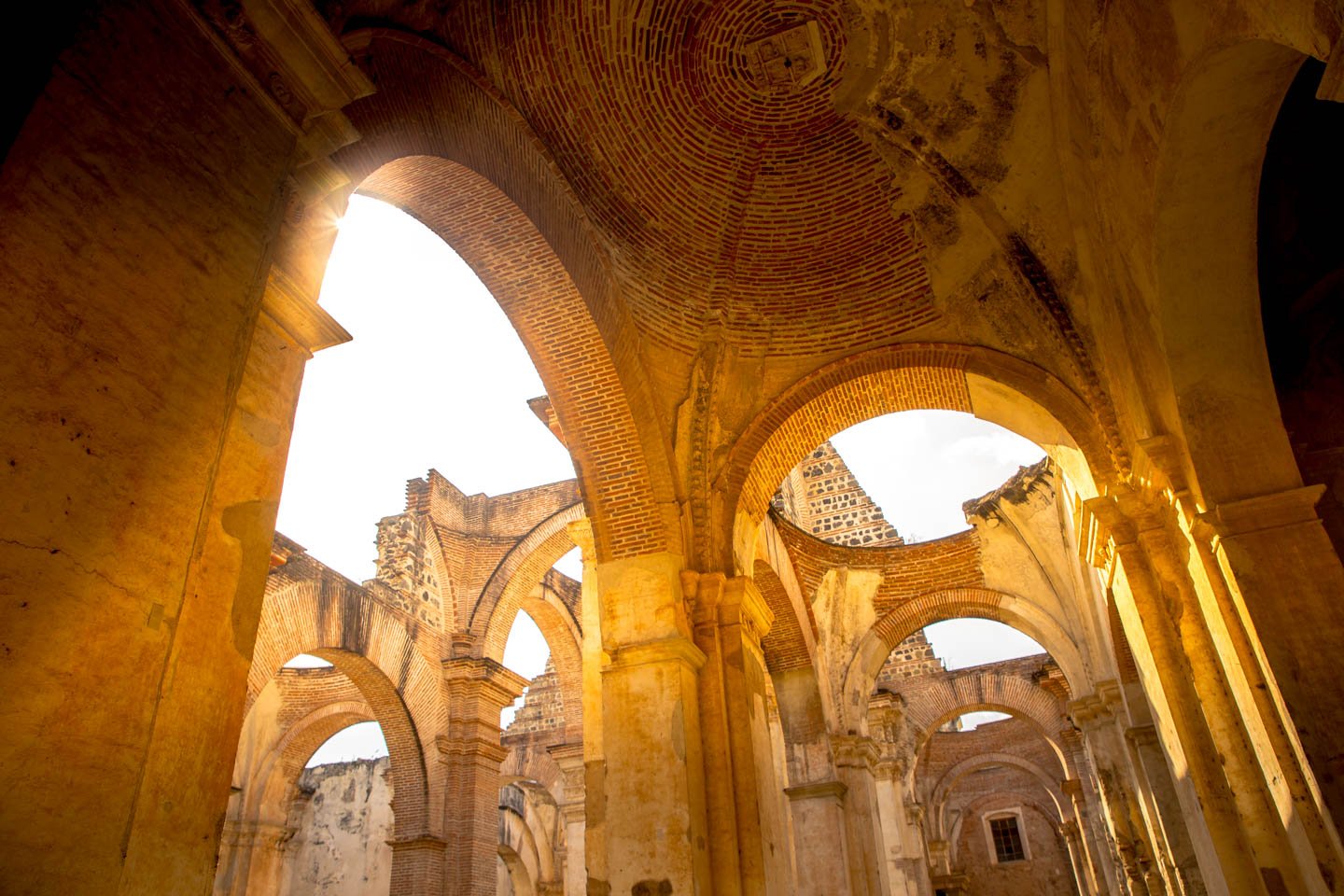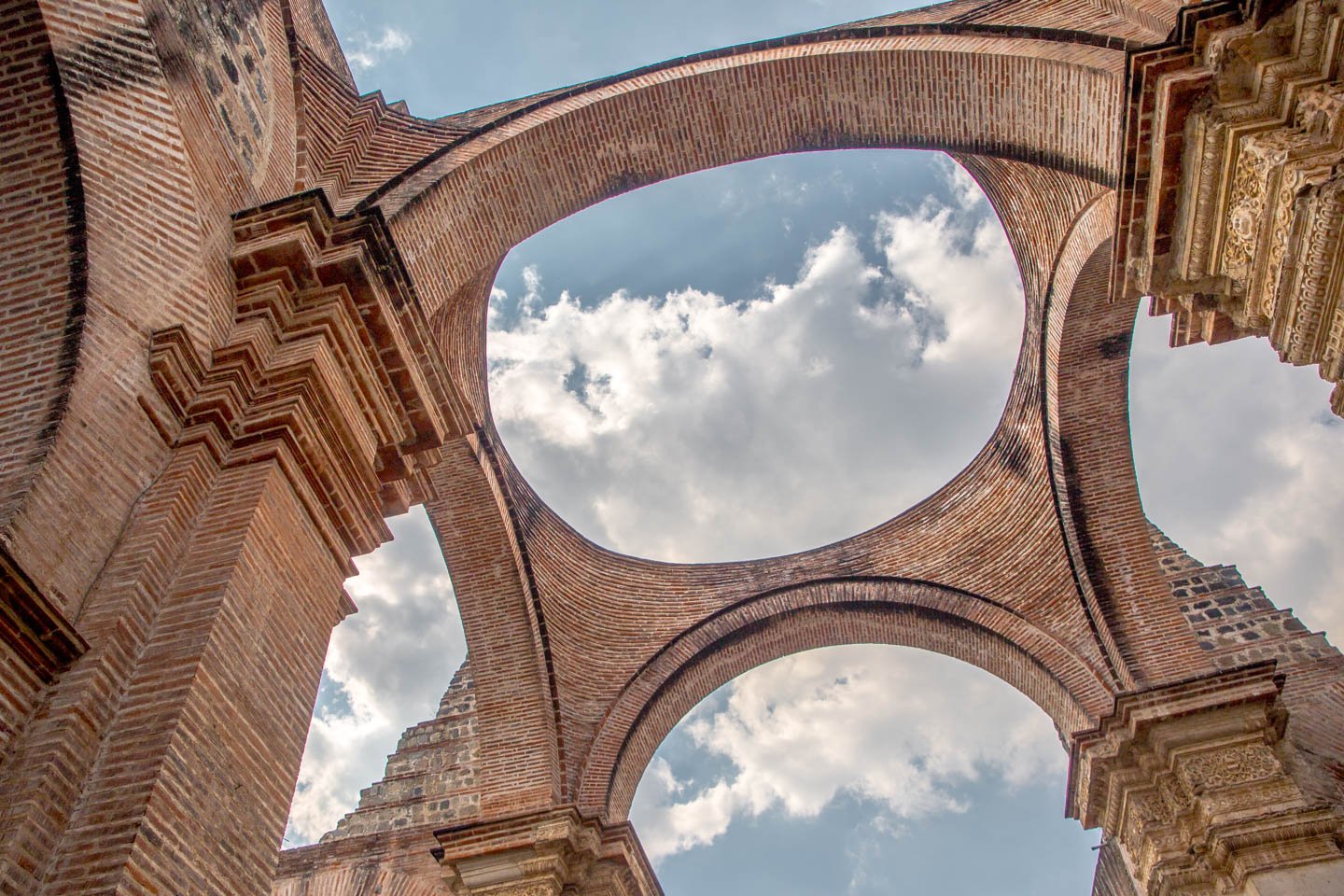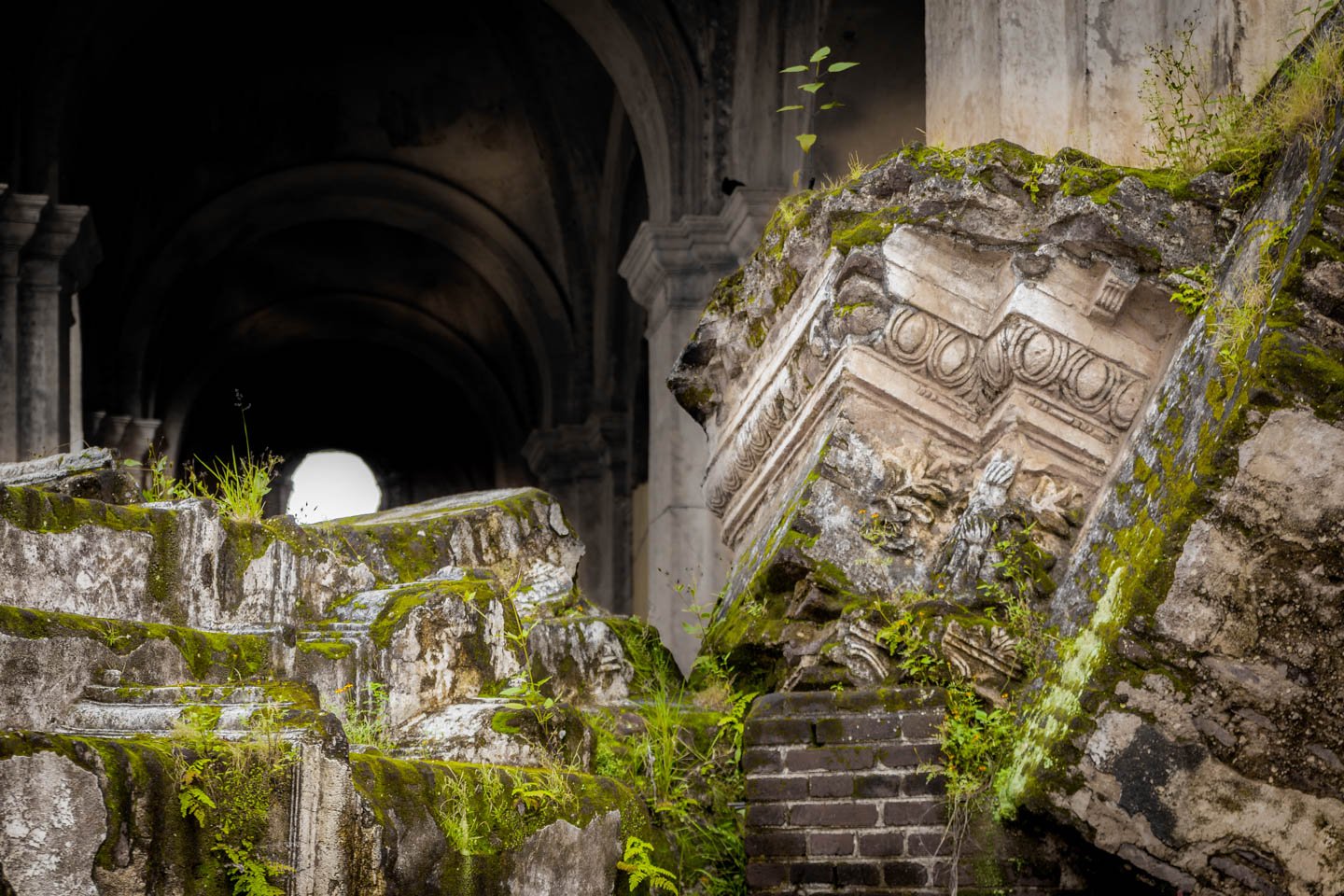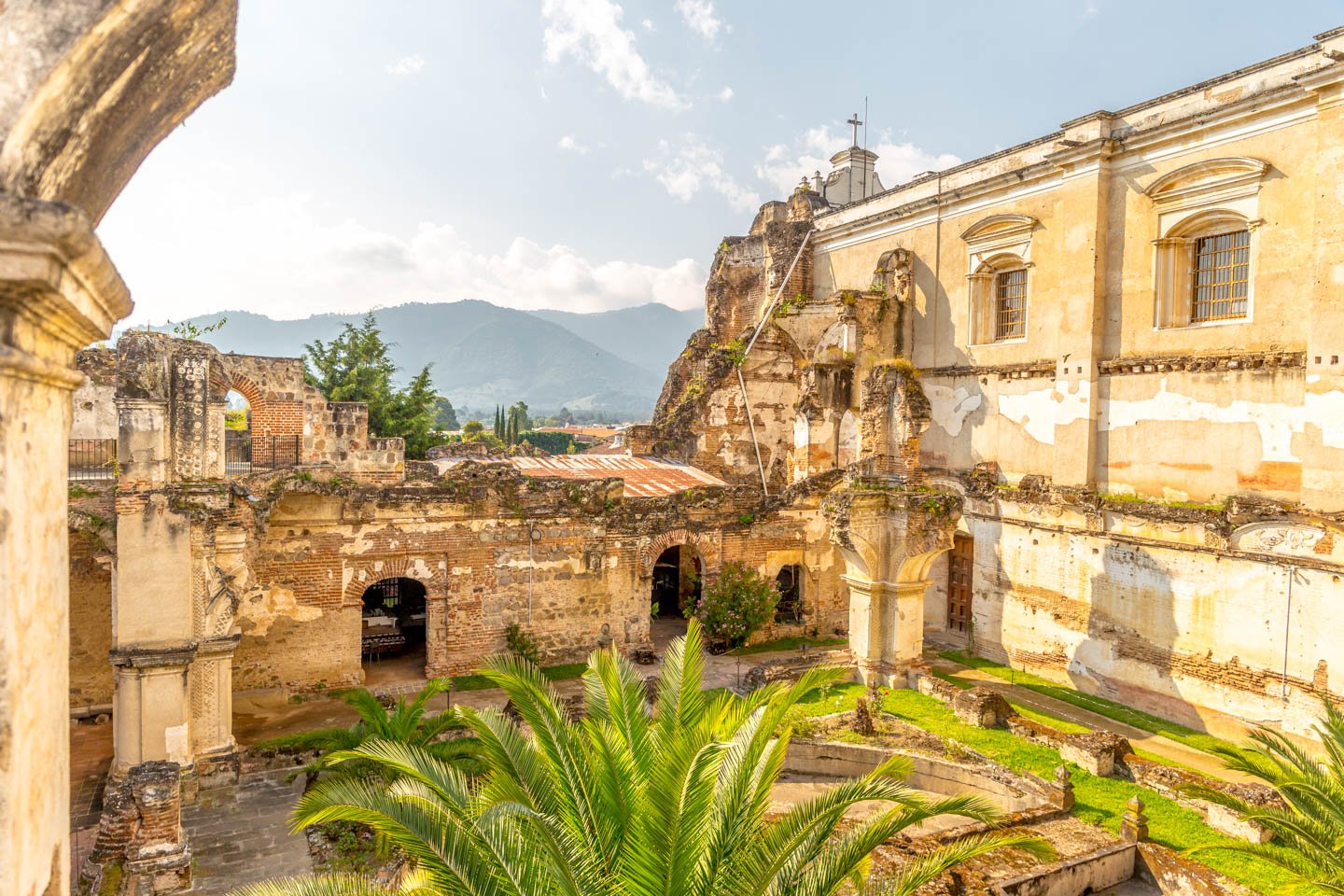Elegant decay

The crumbling, earthquake ravaged churches of Antigua are a photographer’s dream (and quite possibly a civil engineer’s nightmare). I wouldn’t go as far as calling myself a photographer, but I can categorically state I am not a civil engineer.
Antigua Guatemala has far more than its fair share of crumbled colonial churches. Crushed by a series of earthquakes throughout the 18th Century, these churches have been left in a glorious state of disrepair. Seeing the warm, morning light finally break through the cloudy skies and light up the carved remnants of arches and columns of these decaying structures is a memorable vista.
As the sky above us clears, the blue skies overhead form a ceiling far grander than the original architects could have hoped for.
There is a timeless beauty in these ruins that just begs you to click the shutter button one more time.
But no matter how many times you frame a photo, it never quite feels like you have captured the true essence of these magical structures. A solemn ode to the folly of mankind in the face of nature’s fury.
One of the grandest ruins is, unsurprisingly, that of the central cathedral—now Parroquia San José. The main church is fully roofed and functional, with an entrance off the town’s main square. But behind that—the crumbling ruins of the Cathedral that once stood when Antigua was named ‘Santiago de los Caballeros’—the grand capital of the Kingdom of Guatemala, under Spanish colonial rule.
Beneath the partially restored arches of this structure, we explore the ancient crypts. Lit by the weak glow of flickering light bulbs, these dark, underground caverns, now empty, echo and shake with the rumble of passing cars in the streets above.
The forlorn remnants of La Recolección church and monastery are now a peaceful park. Huge blocks of collapsed masonry pile up inside the former church to create an eerie memento of Antigua’s shaky past.
The streets of Antigua are lined with the Catholic church’s architectural triumphs that soon turned to defeats at the fickle hands of Mother Nature.
Some churches have fought valiantly to survive. Iglesia San Fancisco Grande has been partially reconstructed.
But beyond the reconstructed church, the ruins extend much further, creating a peaceful garden from the remnants of the old buildings.
From here the stations of the cross lead to Parroquia El Calvario.
In the grounds of this church is the ‘Miracle tree’ of Hermano Pedro (Brother Pedro), the flowers of which are said to have healing properties. You have to wait for them to fall, no hastening them by throwing sticks or stones warns the sign.
Hermano Pedro is famous for his work with the poor and establishing Guatemala’s first hospital. Today, the charitable hospital and church in Antigua that bears his name carries on the tradition of providing help to those most in need.
I digress—back to the un-restored churches! Perhaps one of the most spectacular ruins is the former Santa Clara Convent.
Wandering this ruin is like exploring an ancient maze, from the dimly lit corridors to the partially restored nave.
Emerging from the eerie crypts to the breezy courtyard, surrounded by layered arches.
I really doubt our photos do this place any justice.
For a panoramic view inside the complex, you can check out the large view on our panorama page for a full screen look at the courtyard.
It is scenes like this that make me glad not to be any kind of structural engineer. Much better to enjoy the surrealist beauty of these crumbling courtyards than wonder about the earthquake code violations and questionable brickwork.
What is left of these churches has stood the test of time and we can hope these places will survive the fickle rumblings of an unstable planet well into the next century.


























































